Art Beat: Marion Art Center exhibit a love letter to beauty of simple objects
In the early 1980s, Anne Carrozza studied painting at the Swain School of Design, following in the footsteps of her older sister Nancy. The painter Jacqueline Block was a significant mentor and she took a sculpture class with David Loeffler Smith, who is most remembered primarily as professor of painting and drawing.
After receiving an associate degree in architecture from Vermont Technical College in 1982, Stephen Remick went on to Swain as well, noting Smith, Sig Haines and Benjamin Martinez as important and impactful instructors.
Some who have heard their “Meet Cute” meets “Art School Confidential” love story might consider it apocryphal, but Remick confirmed it was “mostly true.” He had intended to major in the graphic design program but when he caught sight of Carrozza, he was smitten, and became a painting student in order to be closer to her.
That decision would turn out to be fruitful, in every sense of the word. They began dating “after the Halloween party” in 1982 and were married five years later. They have two adult children, Theo and Tess.
The two are now featured in an eponymous exhibition subtitled “Paintings: The Beauty of Simple Objects, The Backyard and Beyond” at the Marion Art Center. Carrozza’s work is displayed in the first floor gallery and it comes across as a revelation of sorts. Having previously viewed her work only in group shows, this large showing is a testament to her creative focus and prolificacy.
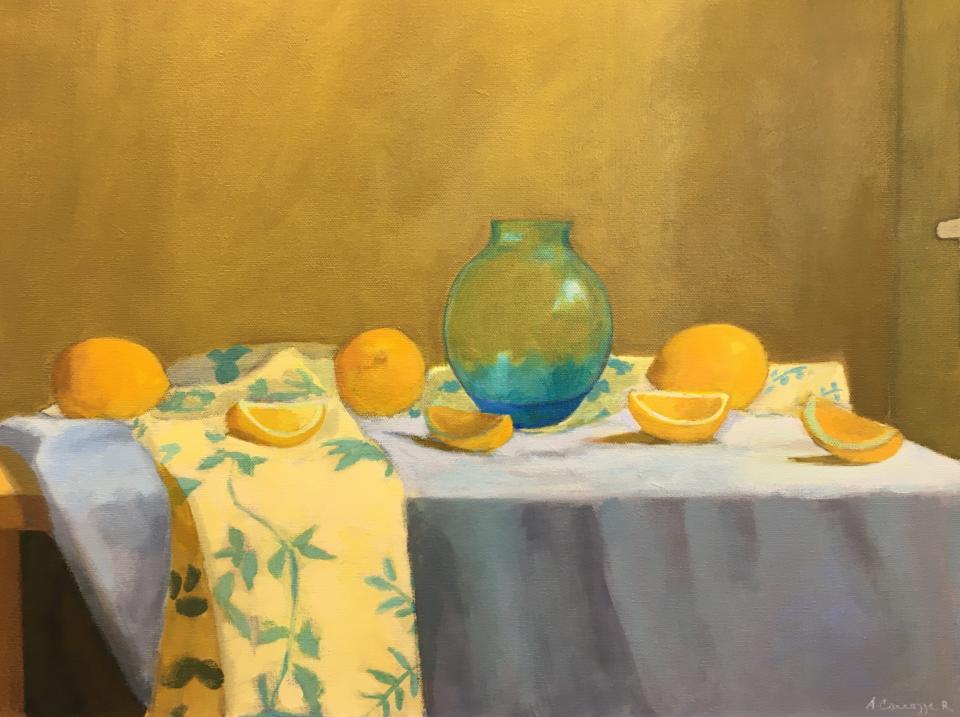
Matisse called Cezanne ‘the father of us all.” Carrozza’s deft and analytical approach to constructing a traditional still-life painting reveals that she has inherited some of that paternal artistic DNA. “Lemons with a Blue Glass Vase” appears deceptively simple but it is a bold move to set a translucent vessel, even one tinged with azure, amid all that citrus and gold. But that vase is the anchor that was needed.
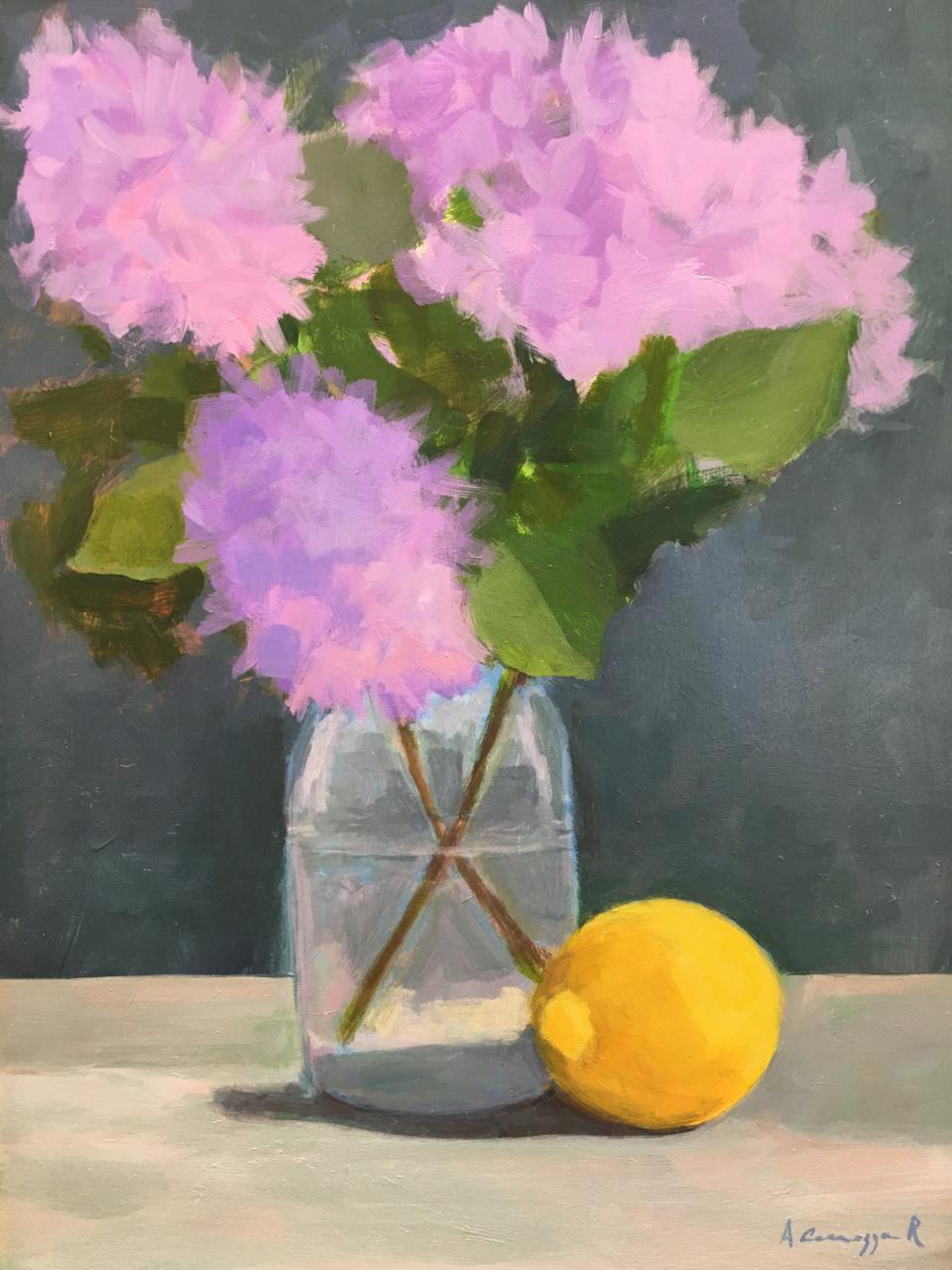
“Lilac with Lemon” is exactly what it sounds like: pink and lavender buds and green leaves against a deep gray backdrop, the fruit abutting the jar which holds the flowers. The two stems of the lilac cross in the jar, the lemon is positioned in such a way as to read as a simple yellow circle. An X and an O. Is Carrozza such a romantic that she is subtly referencing a hug and a kiss? Certainly seems possible.
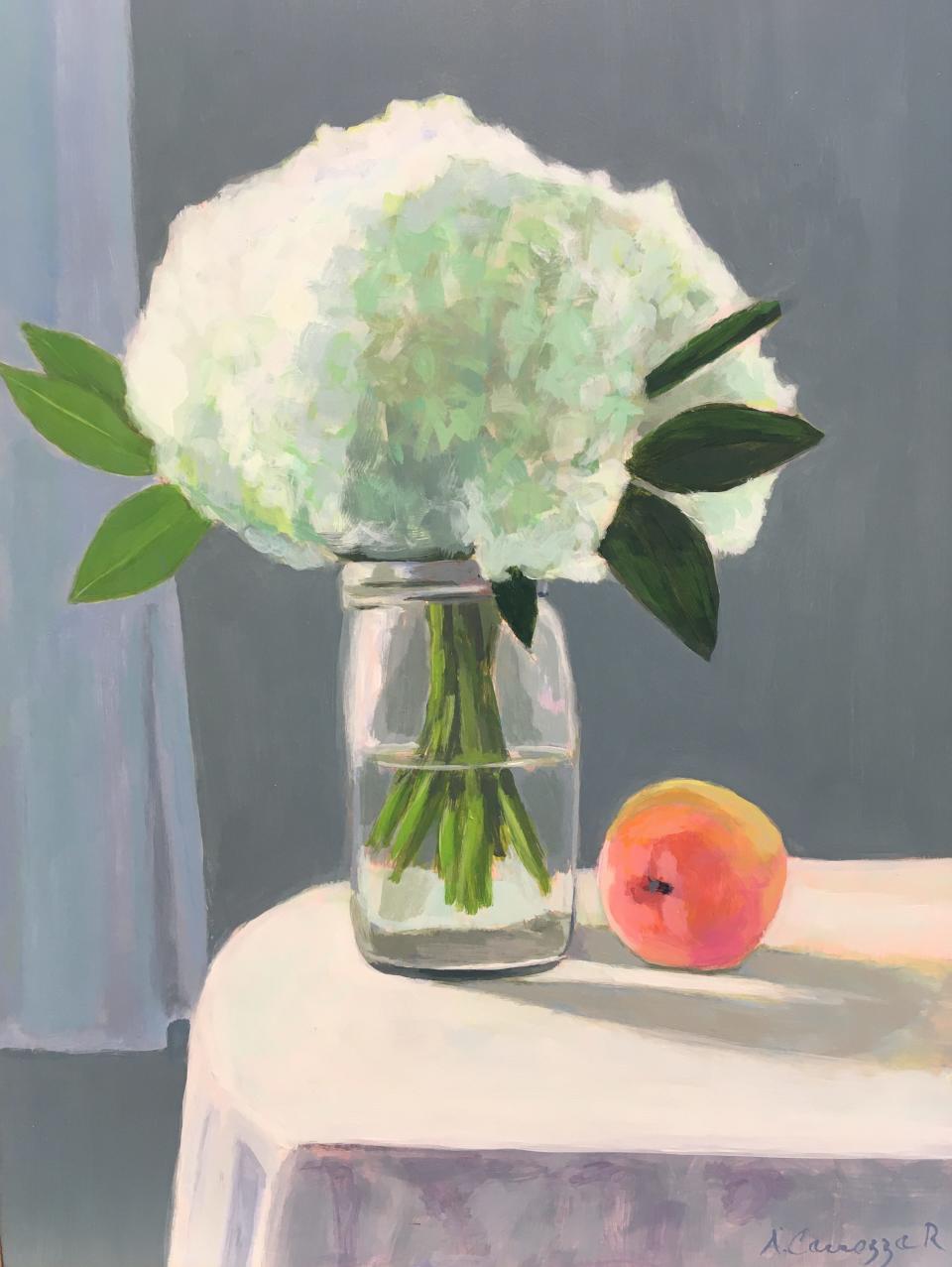
“White Hydrangea with a Peach” is as simple and eloquent as one could imagine a still-life could ever be.
Among the dozens of still-lifes and a few exterior scenes, there is one particular painting that was particularly intriguing in that it was uncharacteristic for Carrozza (within the spectrum of the exhibition) and that it was oddly almost meta.
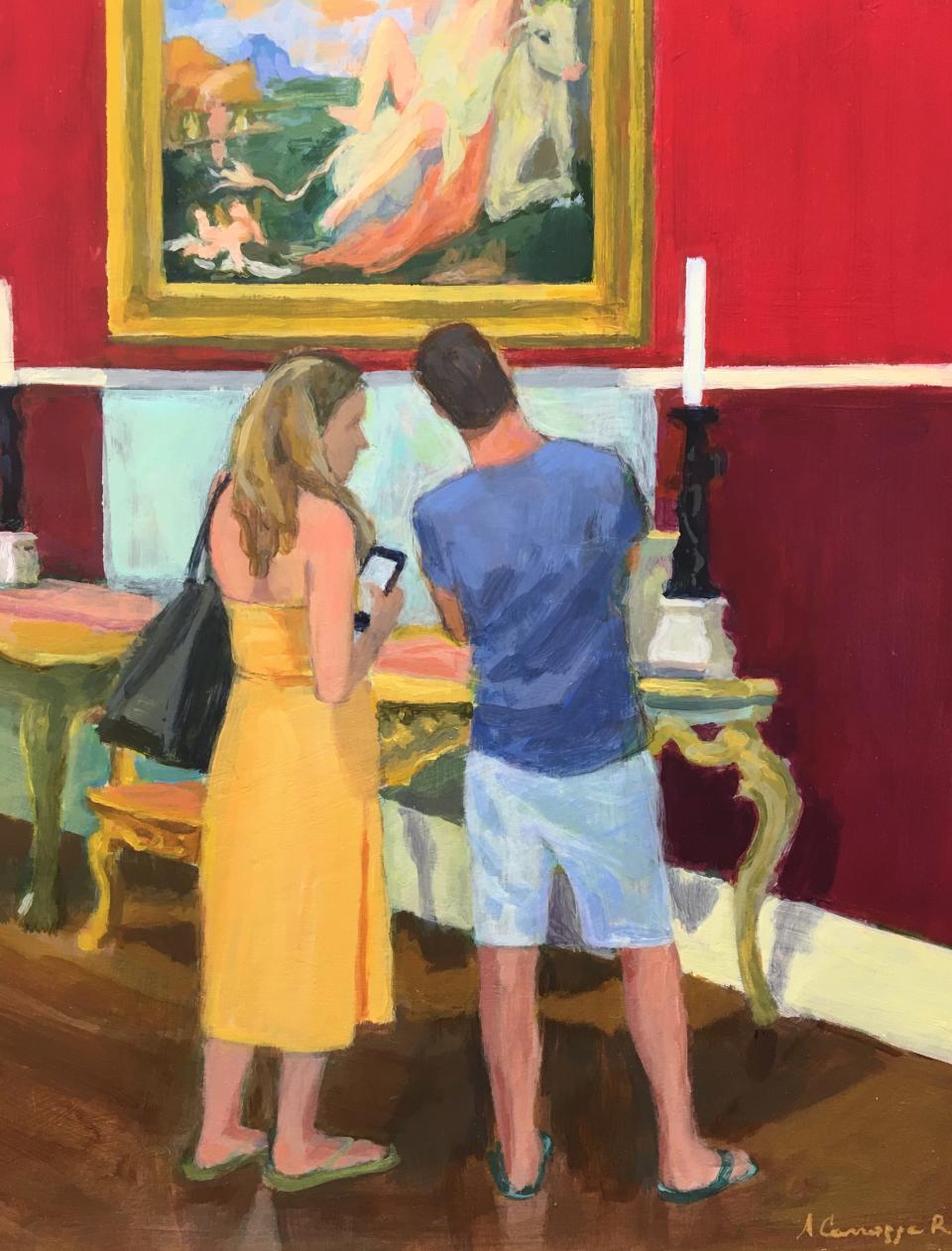
“The Titian Room” depicts a young couple standing in front of Titian’s “The Rape of Europa” in the Isabella Stewart Gardner Museum. On the left, a woman holds a cellphone and she seemingly stares at the phone held (out of sight) by the man to her right, likely showing her his photo of the masterpiece in front of them.
Carrozza painted a painting from a photograph of a young couple who took photographs of the painting she was waiting to see.
Remick displays his work on the second gallery floor and for longtime fans of his work, some of it will be quite familiar. During the height of the pandemic, he painted a large series of portraits of health care workers, clearly exhausted with reddened eyes, skin rubbed raw by masks and emotionally drained.
Occasionally, Remick has flirted with color field abstraction “inspired by the edges where air and land meet.” Some of those flirtations went somewhere that seemed edgy or full of possibility or a momentary distraction. But Remick is nothing if not loyal and he soon circled back to his true love: landscape painting.
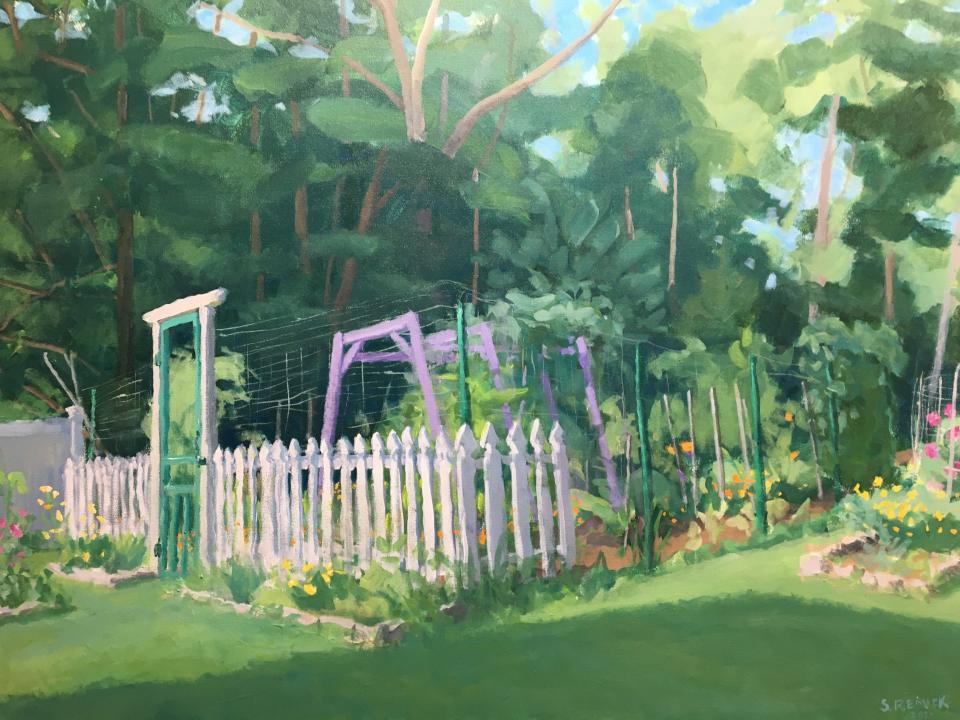
“Summer Garden” is classic summertime Remick. It is a depiction of a lush verdant backyard oasis. Instead of a gate, there is a green screen door through the white picket fence. Inside the plot, there are lavender trellises, flowers and produce. It is idyllic.
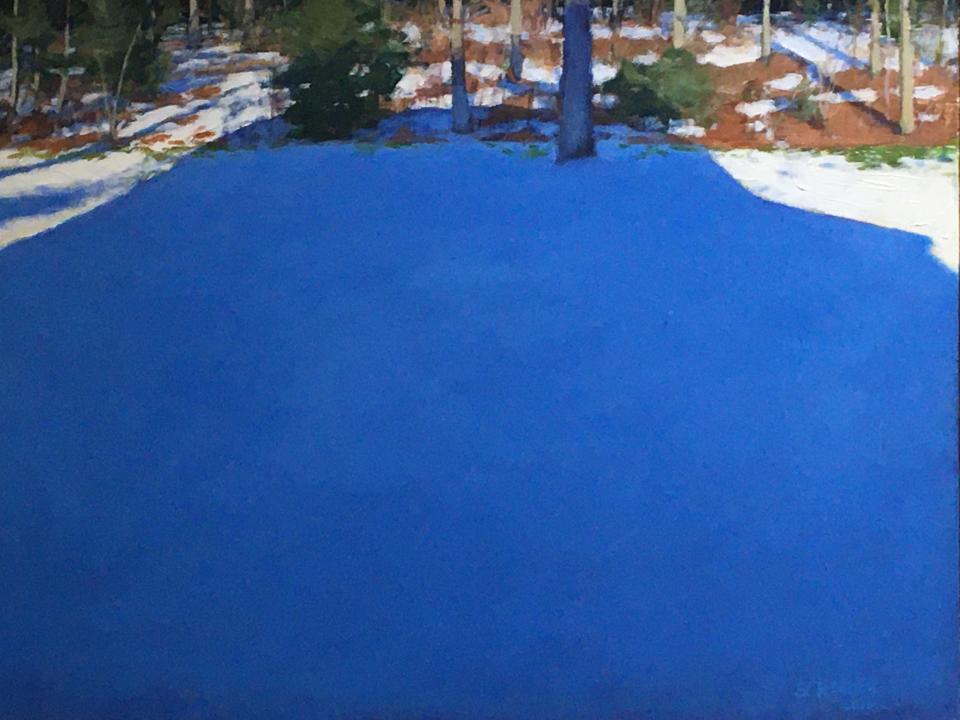
“Big Blue Shadow” is classic wintertime Remick. A preternatural shade of blue takes up much of the painting, culminating with snowy edges and a palpable sense of frigidity. There is something inherent in it that suggests the possibility of danger. But many of Remick’s winter scenes — with footprints through the woods, a setting sun or an unexpected snowman — have a bit of a Stephen King vibe about them.
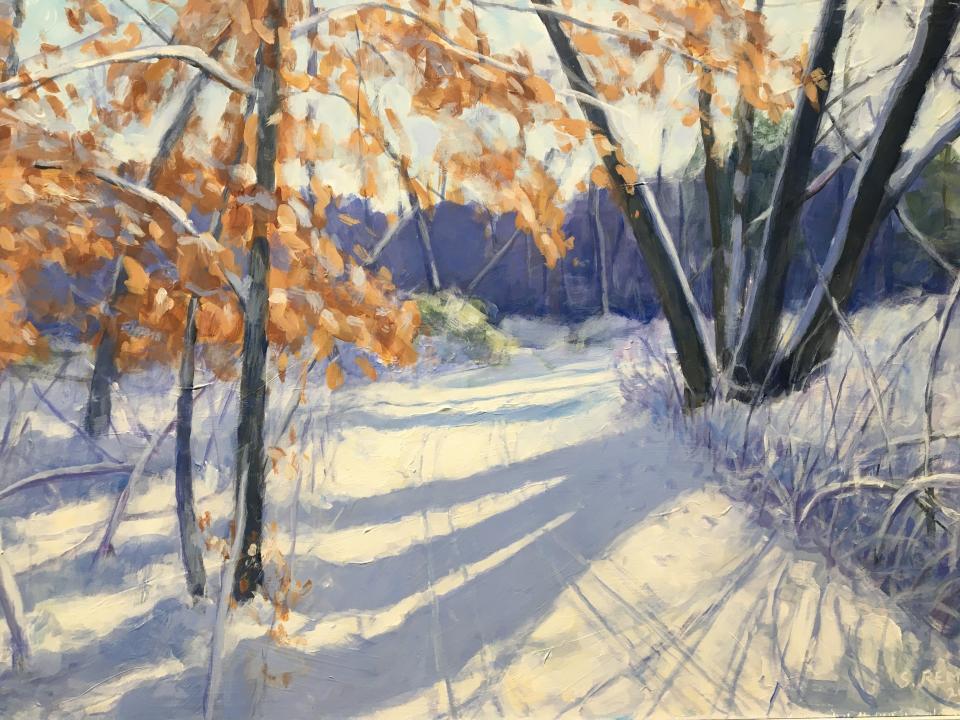
“The Journey,” a painting that I consider to be one of Remick’s very best, is on display. It depicts a young woman with her back to the viewer. Her blonde hair is tied up in a bun, she wears a pink life vest and sits in the front of a kayak with a paddle in her hands.
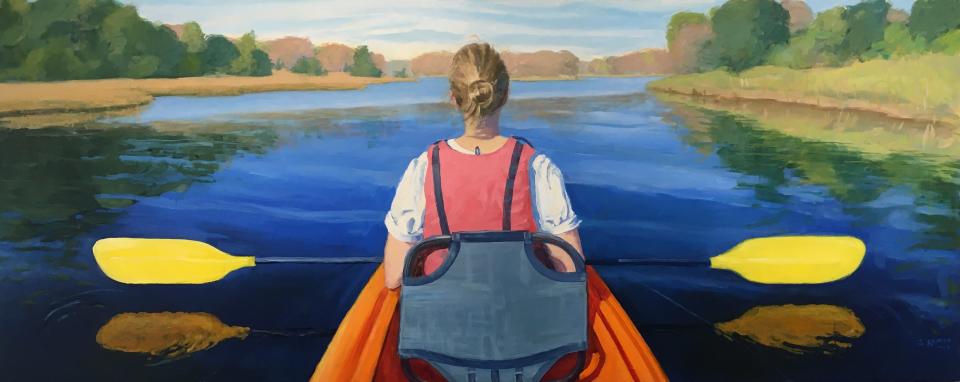
Painted from a photograph by Remick, perhaps six years ago, it is his daughter Tess, just before she was to leave for her first year of college. It is a poignant and powerful metaphor.
“Anne Carrozza Remick & Stephen Remick / Paintings: The Beauty of Simple Objects, The Backyard and Beyond” is on display at the Marion Art Center, 80 Pleasant St., Marion, until June 24.
This article originally appeared on The Herald News: Art Beat: "Paintings: The Beauty of Simple Objects" Marion Art Center

